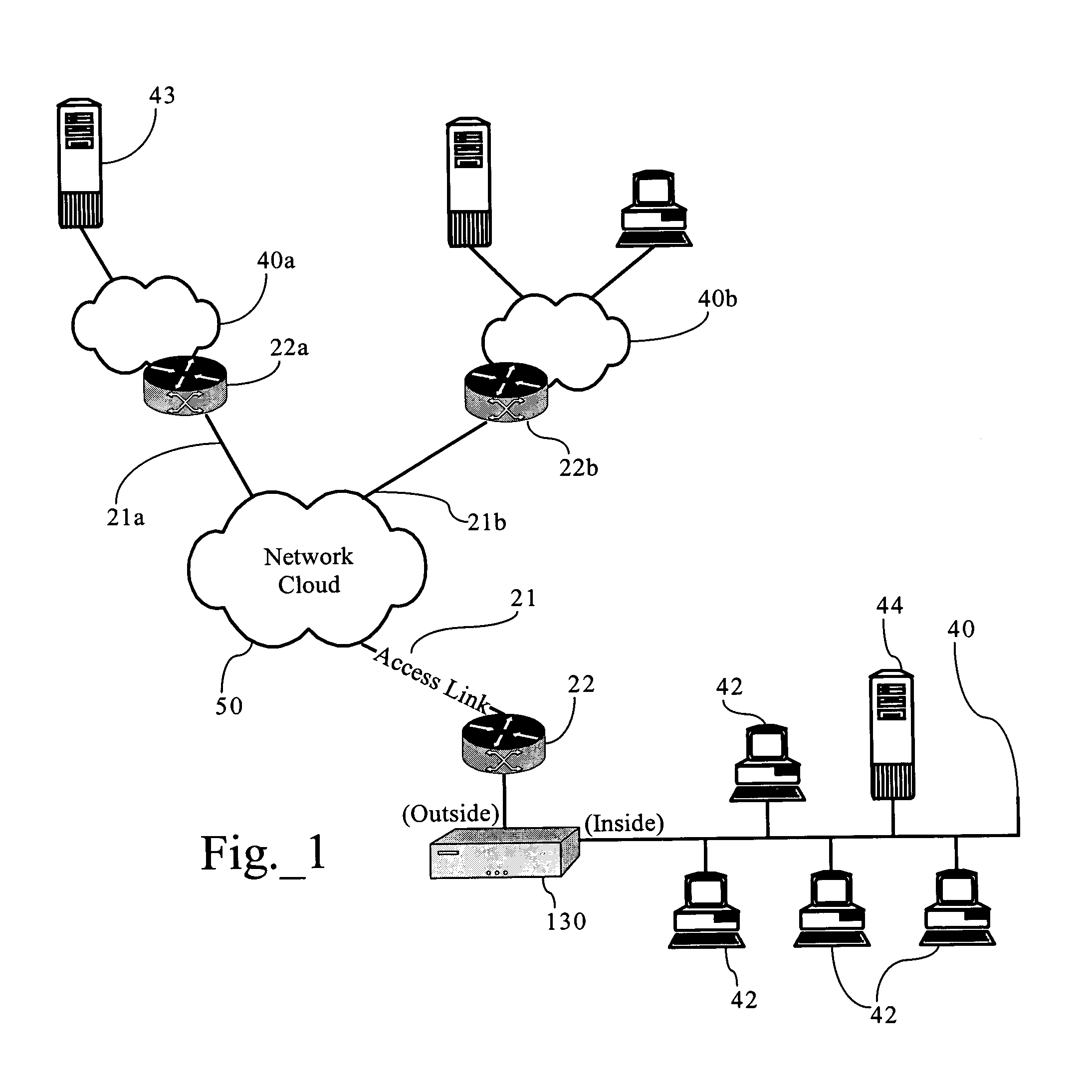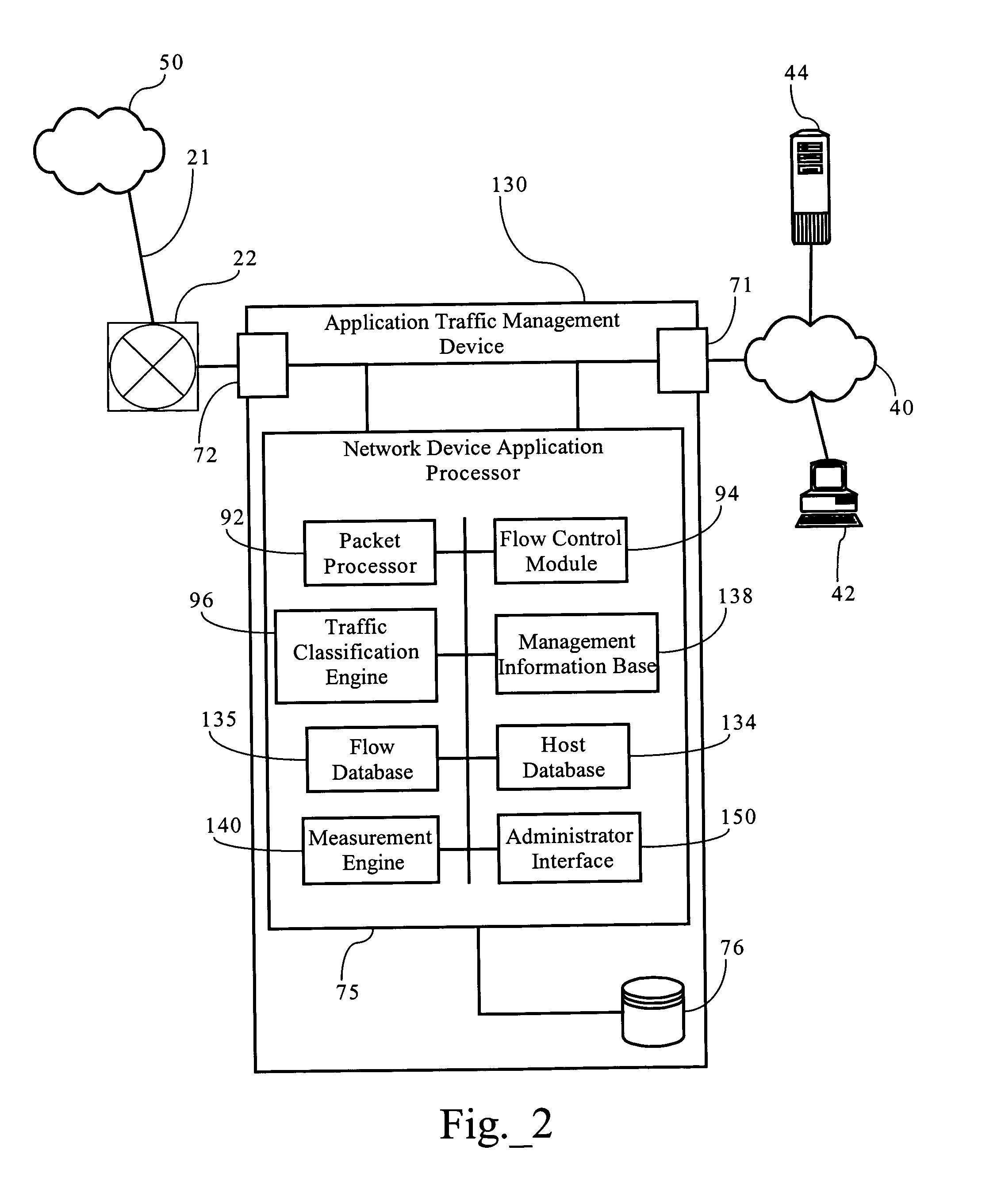Aggregate network resource utilization control scheme
a network resource and control scheme technology, applied in the field of network resource management, can solve problems such as affecting data transfer speed,
- Summary
- Abstract
- Description
- Claims
- Application Information
AI Technical Summary
Benefits of technology
Problems solved by technology
Method used
Image
Examples
case 1
ions with Weights
[0075]FIG. 9A illustrates a hierarchical partition configuration including three leaf partition nodes (B, C & D). Each node of the partition hierarchy includes a weight that determines the fair share of the bandwidth a given partition node is allocated from a parent partition relative to its sibling partition nodes. In one implementation, starting from the root node, the weights of the direct child nodes (here, A & B) are compared to allocate available bandwidth of the root partition. The bandwidth allocation that each node receives, in one implementation, is based on the following equations:
Aggregate Weight=ΣWeights from Child Nodes
[0076]AllocationPerPartition(c)=ParentAllocation*ConfiguredWeightofPartition(c)AggregateWeight
Table 1, below, illustrates the bandwidth allocations resulting from application of the foregoing fair share algorithms to the configuration illustrated in FIG. 9A.
[0077]
TABLE 1PartitionWeighted Fair shareA400KC 80KD320KB600K
case 2
ions with Weights and Minimum Bandwidth Settings
[0078]As in the above example, the fair share bandwidth allocation is again computed based on the weights of sibling partitions, starting from the root partition and ultimately down to the leaf partition nodes. However, the minimum bandwidth settings associated with one or more child partitions limits the amount of bandwidth distributed according to a weighted, fair share algorithm. In one implementation, the following equation describes the bandwidth allocation accorded to each child partition, where TotalConfigMin is the sum of the minimum bandwidth settings for all sibling partitions depending from the parent partition whose bandwidth is being allocated.
[0079]AllocationPerPartition(c)=ConfigMin(c)+(ParentAllocation-TotalConfigMin)*WeightofPartitionAggregateWeight
Table 2 sets forth the resulting aggregate bandwidth allocation for the configuration illustrated in FIG. 9B.
[0080]
TABLE 2PartitionWeighed Fair ShareA100k + (1M − ...
case 3
c Partition with Maximum Bandwidth Settings (with or without Minimums)
[0081]In the case where a given partition includes a maximum bandwidth setting, a redistribution of excess bandwidth may be required if the weighted fair share that would be otherwise allocated to the partition exceeds its maximum bandwidth setting. For didactic purposes, assume the partition configuration set forth in FIG. 9C. In a first allocation round, assuming that the weights configured for each partition are equal, the initial aggregate allocation for each node is 333 Kbps. However, since maximum bandwidth settings have been configured, a check must be made to determine whether the computed allocation exceeds the maximum bandwidth setting for any child node. In the example of FIG. 9C, Partition A has been configured with a maximum bandwidth setting of 100 Kbps; accordingly, an unallocated share of 233 Kbps is available for distribution to the sibling nodes based on their respective weights and maximum bandw...
PUM
 Login to View More
Login to View More Abstract
Description
Claims
Application Information
 Login to View More
Login to View More - R&D
- Intellectual Property
- Life Sciences
- Materials
- Tech Scout
- Unparalleled Data Quality
- Higher Quality Content
- 60% Fewer Hallucinations
Browse by: Latest US Patents, China's latest patents, Technical Efficacy Thesaurus, Application Domain, Technology Topic, Popular Technical Reports.
© 2025 PatSnap. All rights reserved.Legal|Privacy policy|Modern Slavery Act Transparency Statement|Sitemap|About US| Contact US: help@patsnap.com



